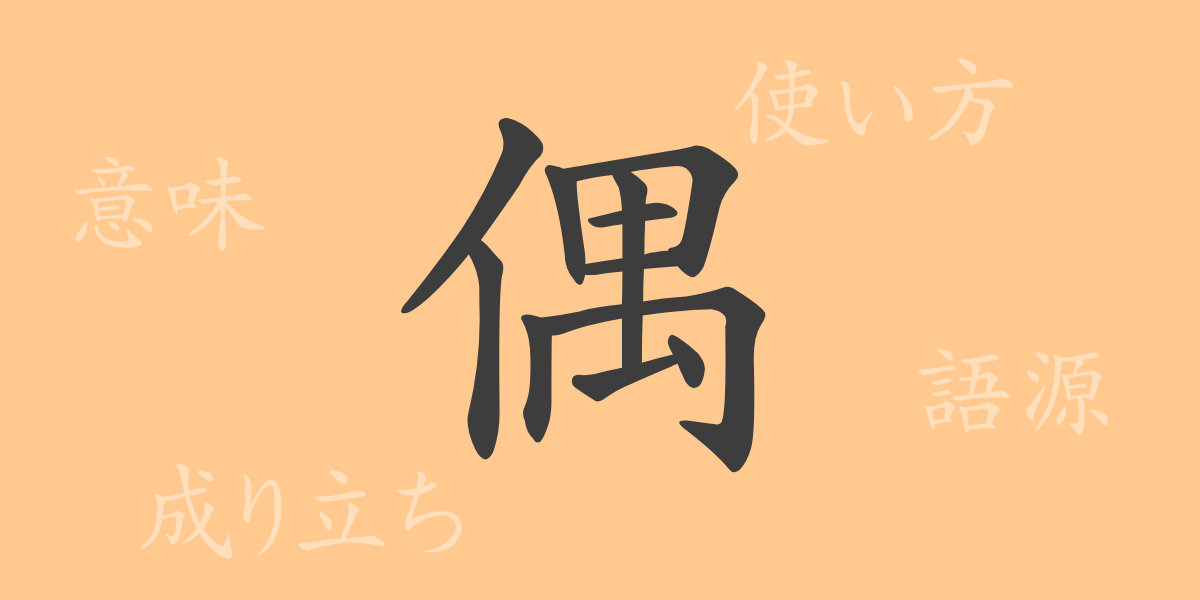The beauty of the Japanese language is also found in its characters. Each kanji has its own history, deeply rooted in the thoughts and culture of the Japanese people. This time, we spotlight the commonly used kanji “偶(ぐう)” and delve into its charm and significance. From its etymology to its usage, idioms, and proverbs, let’s explore the world of “偶(ぐう).”
Origin of 偶(ぐう) (Etymology)
The kanji “偶(ぐう)” originated in ancient China. Developed from pictographs, this character combines “立(たつ)” meaning “to stand” and “又(また)” meaning “again” or “by chance.” This combination signifies “something that happens by chance,” thus representing “coincidence” or “pair” in Chinese characters.
Meaning and Usage of 偶(ぐう)
The kanji “偶(ぐう)” has multiple meanings. Generally, it is used to denote “coincidence,” carrying nuances of “unexpected events” or “by chance.” It also signifies “pair” or “couple,” as in two things forming a set, and is used in mathematical terms like “偶数(ぐうすう)” meaning “even number,” which is divisible by two.
Readings, Stroke Count, and Radical of 偶(ぐう)
The kanji “偶(ぐう)” reflects the diversity of the Japanese language in its readings and structure.
- Readings: On’yomi (Chinese reading) – グウ(ぐう); Kun’yomi (Japanese reading) – たま (tama)
- Stroke count: 11 strokes
- Radical: 人偏(ひとへん) (person radical)
Idioms, Phrases, and Proverbs Using 偶(ぐう)
Idioms, phrases, and proverbs containing “偶(ぐう)” demonstrate the richness of Japanese expression. For instance, “偶然(ぐうぜん)” means “by chance,” “偶数(ぐうすう)” refers to “even numbers,” and “夫婦偶(ふうふぐう)” signifies “husband and wife,” highlighting the pair relationship. “偶像(ぐうぞう)” means “idol” or “statue of worship,” used in cultural or religious contexts.
Conclusion on 偶(ぐう)
The kanji “偶(ぐう)” showcases the depth of the Japanese language, from its formation to its meaning and usage. Symbolizing chance encounters and relationships, this kanji plays a vital role in Japanese words and culture. Although “偶(ぐう)” may be overlooked in daily life, it carries a rich history and meaning that we hope to convey through this article.

























